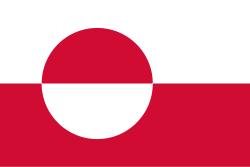Greenland's Melting Ice Reveals Rare Earth Riches Amid Geopolitical Tensions
 Greenland
GreenlandGreenland has one of the highest suicide rates globally, with over 80 deaths per 100,000 inhabitants, a stark contrast to the global average of nine, according to the World Health Organization. The island, home to just 57,000 people, has been grappling with a suicide epidemic since the 1960s, peaking in 1989 when rates reached 120. As described by local sociologist Maliina Abelsen, the suicide crisis is deeply tied to cultural dislocation and identity loss stemming from colonization and modernization, leading many to feel alienated within their own communities.
Interviews reveal that almost every resident knows someone who has died by suicide. Young men aged 20 to 24 are particularly vulnerable, as highlighted by social worker Poul Pedersen. The issues are exacerbated by high rates of alcohol abuse and violence in remote communities, where resources and communication are limited. Although various government campaigns and support initiatives have been implemented, they have yet to significantly reduce the suicide rates. Experts emphasize the need for broader societal healing to address the underlying trauma affecting the Greenlandic population.
 Greenland
Greenland Greenland
Greenland Greenland
Greenland